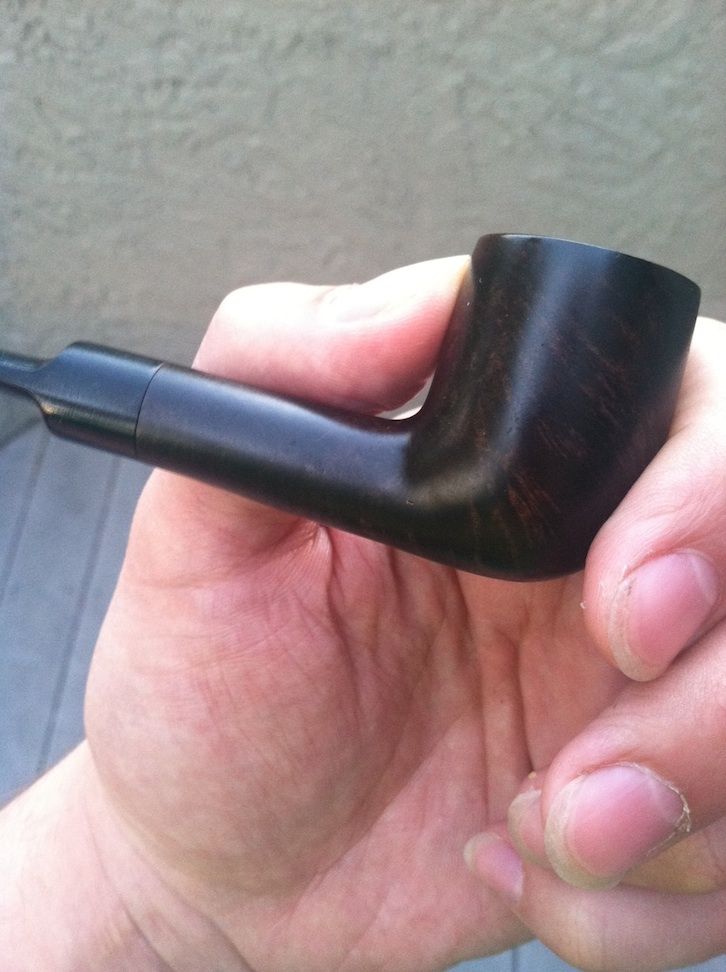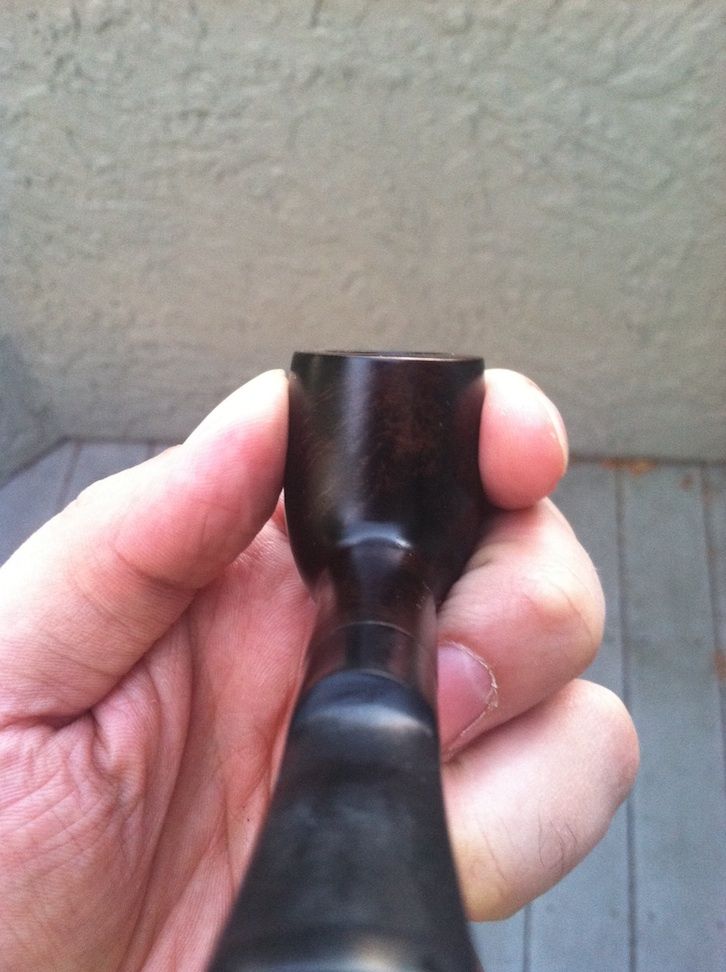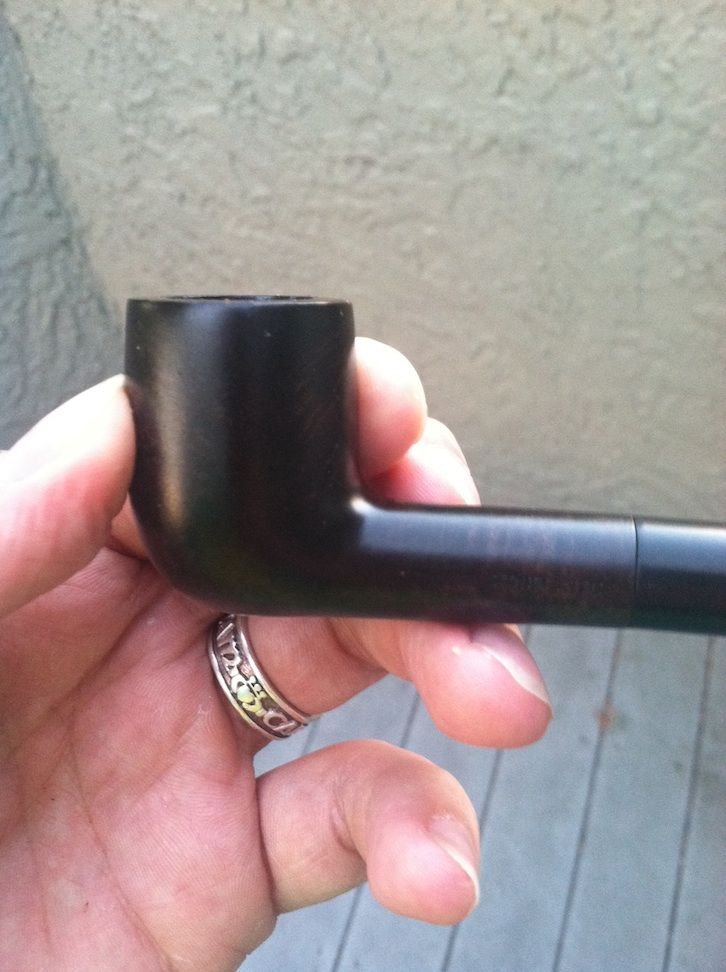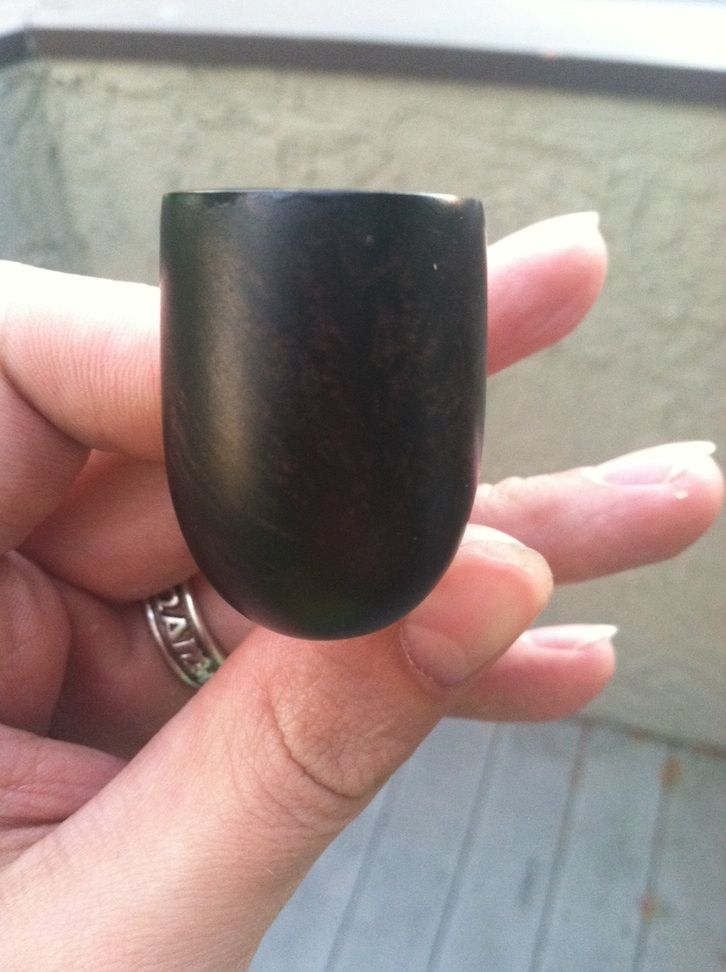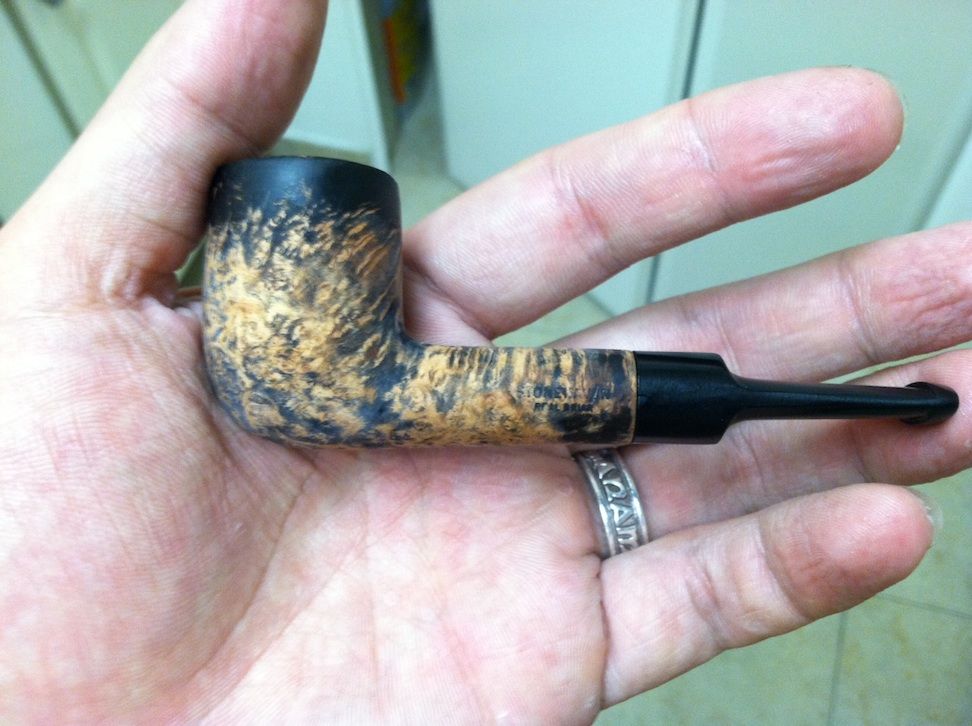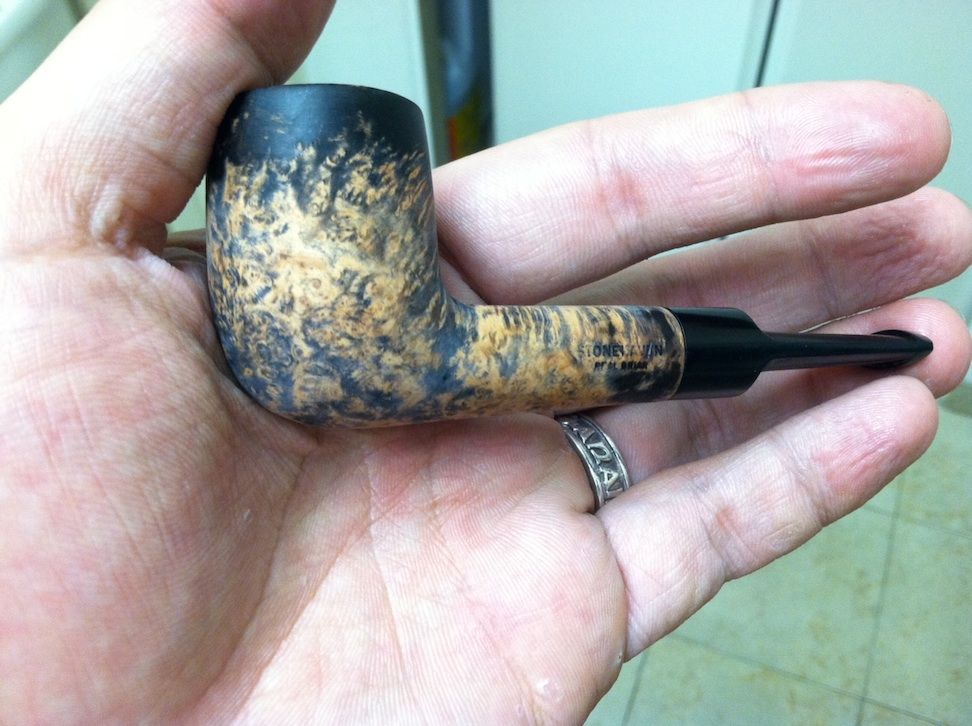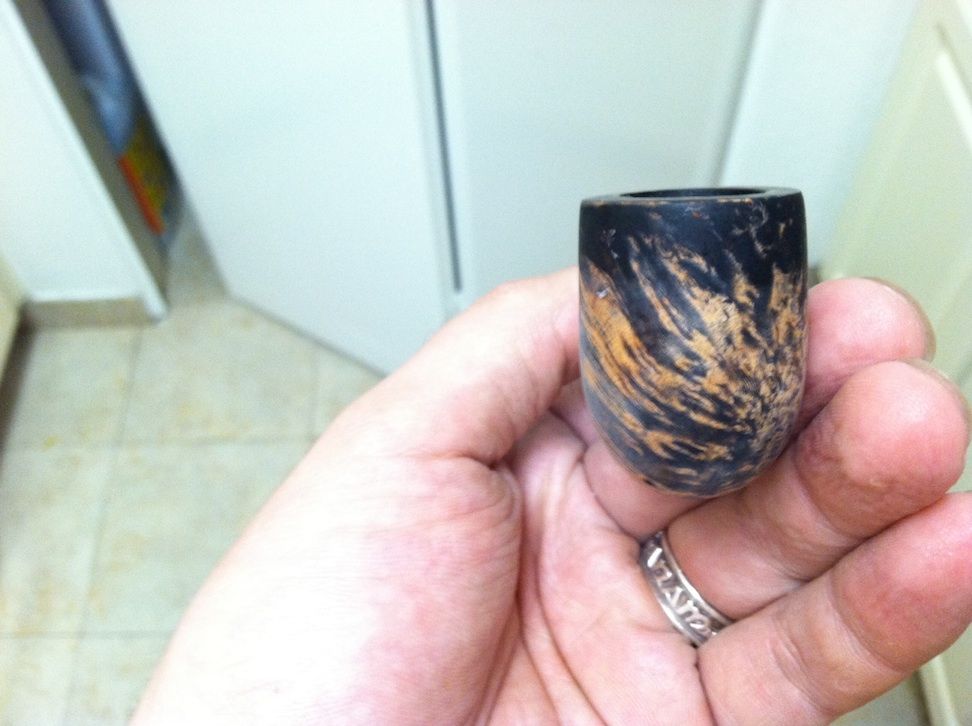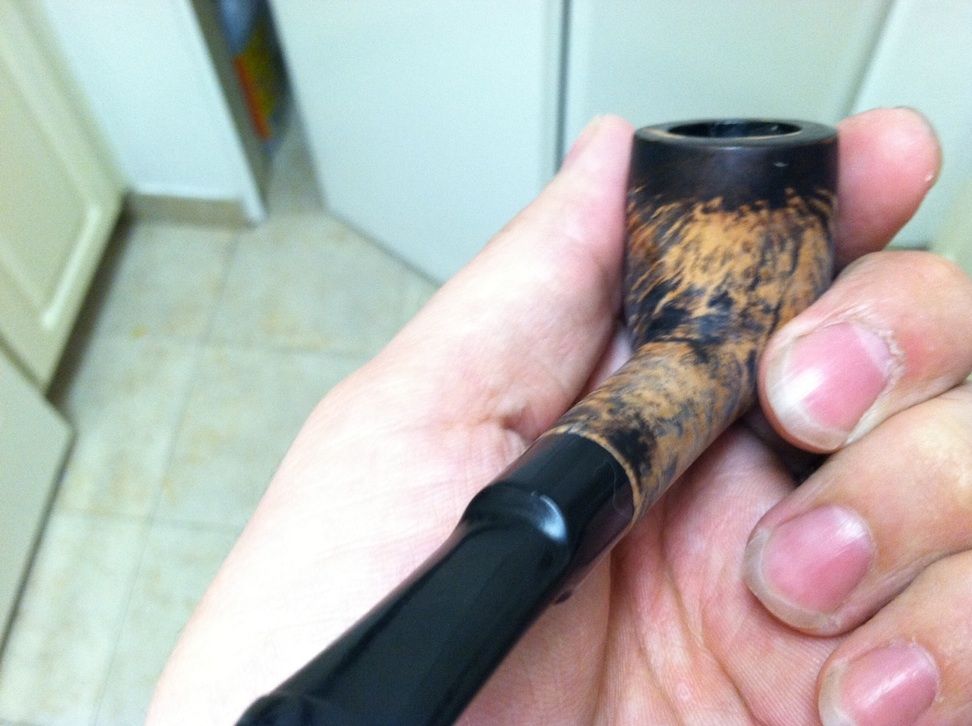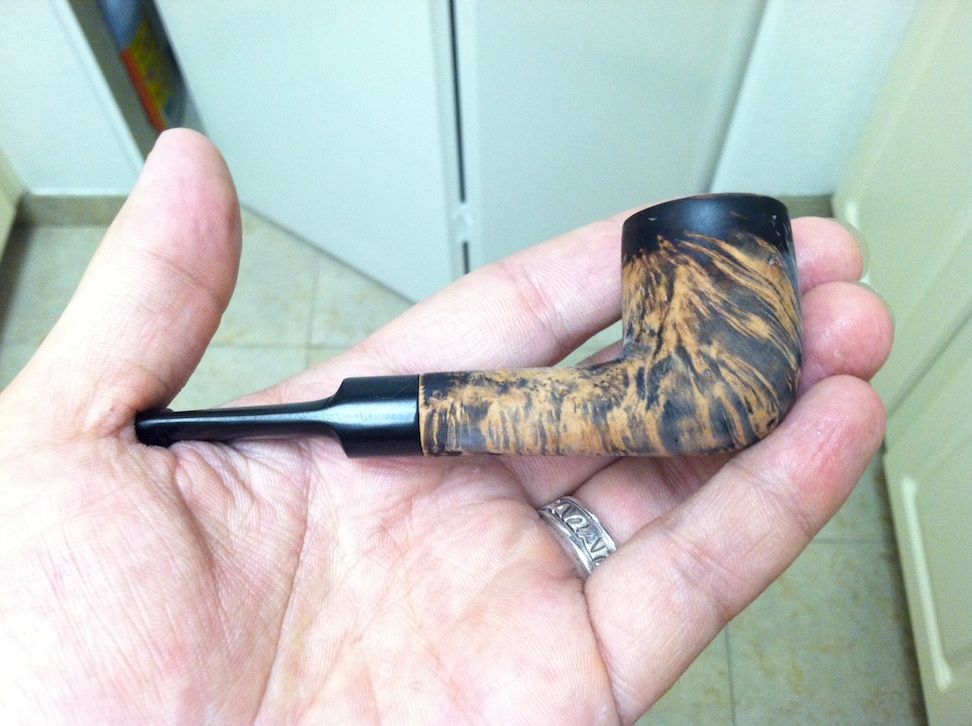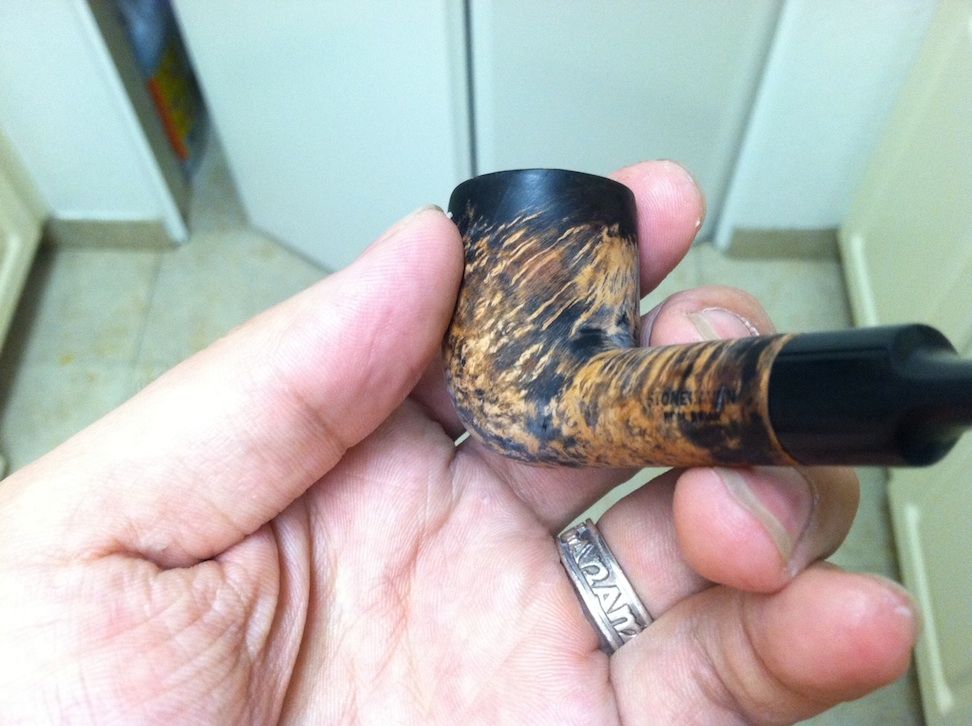Stripping naked...
- Thread starter tjameson
- Start date
You are using an out of date browser. It may not display this or other websites correctly.
You should upgrade or use an alternative browser.
You should upgrade or use an alternative browser.
SmokingPipes.com Updates
Watch for Updates Twice a Week
- Status
- Not open for further replies.
So what ended up working for me was saying screw it and using 800 grit emery paper and wet sanding most of the finish off leaving it dark on the top of the bowl kind of fading into the grain. One side of the bowl revealed some nice Birdseye as well as on the shank. Will be postin pics when I get home. Just have to find some wax but I don't mind the feel and look of the all natural. Plus side is wild turkey is a great bowl sweetner : : also I'm smoking it outside and it's pretty windy today and it's staying waaaaaay cooler than it did with the finish on.
: also I'm smoking it outside and it's pretty windy today and it's staying waaaaaay cooler than it did with the finish on.
 : also I'm smoking it outside and it's pretty windy today and it's staying waaaaaay cooler than it did with the finish on.
: also I'm smoking it outside and it's pretty windy today and it's staying waaaaaay cooler than it did with the finish on.I have several 'natural' pipes and you're right, they are great for outside... Looking
forward to the photo's.
forward to the photo's.
I don't know a lot about furniture refinishing but have refinished a bunch of pipes. I don't know that there would be any harm using the Formbys on a pipe if used with --as TopD said--a little common sense. But I won't be using it on my pipes. Don't think it is necessary. If a pipe has a lacquer or other type of varnish on,I use steel wool damped with alcohol to remove it.Soaking the bowl in alcohol will speed the process,although I usually don't do that.No No.... I'm not talking about immersing the pipe or licking the outside of the bowl either. Cork the
bowl and shank.... Use some good common sense.
Why would you want to remove wood from your pipe? I would think again before using an abrasive like sand
paper or steel wool. If it has a couple of dints you want to get out, raise the wood back, don't sand it.
Put a wet washcloth over the dent and heat it with an iron or heat gun. The steam will raise the dent back
up. The dent is just compressed wood. Now if it's 'missing' wood like a scratch, it wont work.
The lacquer on a pipe is there for two reasons--to make it shine without a lot of sanding and buffing--and to hide the sanding scratches. Most lacquered pipes are sanded to about 360-400 grit,not high enough to give a nice shine.
If you remove the lacquer,you WILL have to sand it to at least 600 grit to get a shine--if you have a buffer. If no buffer it will have to be sanded to much finer grits. This is where Micro-Mesh is nice. It will put a nice shine on a pipe with enough elbow grease as long as you take your time and and make sure it is well sanded before moving up to the next grit.It is possible to put a VERY nice shine on briar with out wax.
To remove the stain( on a un-lacquered pipe),an alcohol soak will get most of it out,sanding will be needed to get the rest and even then you will be lucky to get it all unless you remove quite a bit of wood. Removing stain WILL NOT make a pipe smoke cooler as removing lacquer is supposed to do. The stain is in the wood--not on it- as a lacquer is.Soaking in alcohol will raise the grain somewhat,and will give the briar a soft,kinda fuzzy look. It will require buffing at a minimum and maybe sanding and then buffing.
Steaming dents out sometimes works.Depends on how deep the dent is.Quite often I will steam then sand to completely remove a dent.
If properly done,sanding the pipe to remove dents and scratches will not remove a lot of wood. You would probably need a micrometer to measure just how much was removed. I usually start with 400 grit.If that doesn't do it I back up to 360. Very seldom is it necessary to go any courser than 360.With some pipes you may be able to start with 600 or even 800,depends on how smooth or scratch-dent free the surface is.
While wet sanding ain't gonna hurt the briar it is best to sand it dry. The water will raise the grain making it hard to get a nice shine.
Good info James... I don't really have a pipe that needs refinishing, but will have to
pick one, I'm gonna have to try your way, it all makes good sense. Thanks!
pick one, I'm gonna have to try your way, it all makes good sense. Thanks!
I dont dislike it like that! A little black stain; painted on the grain will really make that pop. Particularly if the pipe is warmed first to open the wood pores. Then, sand the stain off hit it with some brown stain then carnuba wax
I did a little restore on one of my lil nose warmers. All I used was regular paint stripper. 2, 30 min sessions. Took the varnish or whatever right off, and left just the stained wood. I then just used olive oil to replish the oil in the wood that the stripper may have drawn out. Its not fancy, but i was happy with the results.
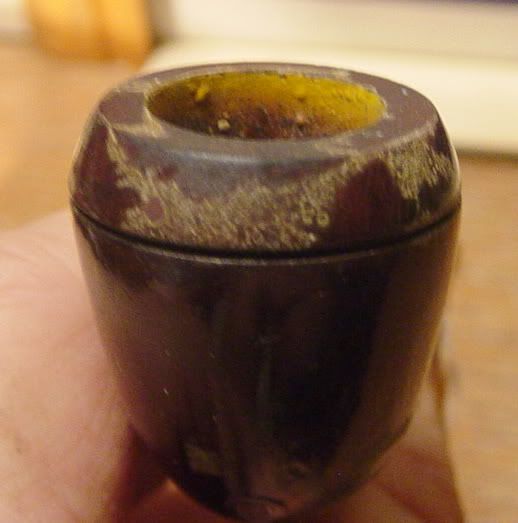







Thanks Al and Weezell, I appreciate that! Thanks for the suggestion Al and Pipedreams for the pictures (where's that focus ring again? :laughat: :nana: ) I honestly think its pretty different and I like it so thats what really matters. Anyone appaled by it? haha
Thanks TopD and James. I'm really glad that sanding it left some of the dark stain in the grain, it really does give it a great contrast. It was kind of hard to fade the "hat" into the lower grain but I'm goin to keep it this way for awhile and see how it patinas. It definitely fits my personality a lot better now. I'm an artist and the boring dark brown just wasn't cutting it. I still consider this a work in progress. Any thoughts on the sno-seal as a wax? I like it just as it is but it might be nice to add a little sheen andsomething to draw out the patina and enhance the already considerable contrast.
I put my pipe bowl in a small tupper ware container or an empty butter container. Fill pipe bowl about half to 3/4 with Baking Soda. Pour White Vinegar into pipe bowl and let the Volcano effect take place. This will strip the pipe bowl down to the bare wood.
Rinse well and put alochol and salt in bowl for 12-16 hrs. Clean bowl and shank. After bowl dries well, I rub it with 3000 grit wet paper to a smooth finish. Let dry well again. Then I rub a coat of Extra Virgin Olive Oil on the bowl and let sit for couple hours. Then rub another coat into wood. Let sit for 8-12 hours. Hand buff well to make sure no excess left. Let sit for a day or so. Apply a coat of Wood and Leather Beesway, let sit for couple hours and apply another coat. Let sit for a day and hand buff with soft cloth. Fill with baccy and smoke. I find this works for me to give pipe a very natural look. (Just my 2 cents worth)
Rinse well and put alochol and salt in bowl for 12-16 hrs. Clean bowl and shank. After bowl dries well, I rub it with 3000 grit wet paper to a smooth finish. Let dry well again. Then I rub a coat of Extra Virgin Olive Oil on the bowl and let sit for couple hours. Then rub another coat into wood. Let sit for 8-12 hours. Hand buff well to make sure no excess left. Let sit for a day or so. Apply a coat of Wood and Leather Beesway, let sit for couple hours and apply another coat. Let sit for a day and hand buff with soft cloth. Fill with baccy and smoke. I find this works for me to give pipe a very natural look. (Just my 2 cents worth)
Thanks Nsfisher I actually tried your suggestion of vinegar and baking soda...it did absolutely nothing just as the 101 wild turkey did nothing but clean out the bowl. I have no idea what was coatin the bowl but it took sanding for 45mins to get it to the point it is at now. I'm still debating what to finish it with so thank you for the suggestions.
I have done a lot of hard wood refinishing and I'm not so sure there is any way to get stain out of wood without removing the wood to a level past which the stain has penetrated. Maybe I am wrong, but I seriously don't know of any product, mouth friendly or not, that will completely lift stain from wood.I would give it a light sand to remove the surface stain and leave the deep stain in the grain. Then Stain with a bright amber or golden colour for that golden high contrast stain look.
- Status
- Not open for further replies.









